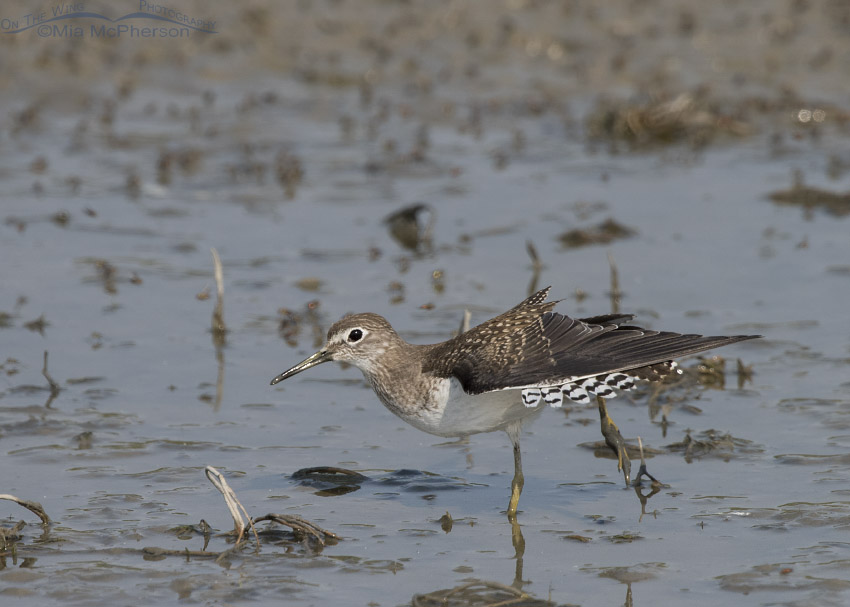 Solitary Sandpiper stretching – Nikon D810, f7.1, 1/1600, ISO 400, Nikkor 500mm VR with 1.4x TC, natural light
Solitary Sandpiper stretching – Nikon D810, f7.1, 1/1600, ISO 400, Nikkor 500mm VR with 1.4x TC, natural light
Solitary Sandpipers have been migrating through northern Utah recently and I’m not the only ones seeing these sandpipers. Other friends in Utah have photographed them and asked me to ID them. I photographed this Solitary Sandpiper two days ago at Bear River Migratory Bird Refuge and saw several more and I also photographed a pair of them the week before. They aren’t all that uncommon in Utah during fall migration.
The thing is that some of the range maps I have checked show Solitary Sandpipers as rare in Utah with them migrating several hundred miles to the east of this area. See this map from Cornell University and my new Sibley’s Guide to Birds shows a similar map (which I won’t take a picture of because of copyright issues).
However; my old American Museum of Natural History “Birds of North America” and my National Geographic “Field Guide to the Birds of North America” guides shows them as migrating through this area on their range maps. My iBird Pro app shows them migrating through this area but my Audubon app shows conflicting results with the first map showing them as common during migration and the second range map they have for Solitary Sandpipers doesn’t show them migrating through Utah. A little confusing, right?
My point is that when trying to use range maps to identify some species of birds you may need to check several sources to get a better idea of where a specific bird species might be found using a range map. That seems to be the case with Solitary Sandpipers any way.
Life is good.
Mia
Click here to see more of my Solitary Sandpiper photos plus facts and information about this species.


And sometimes, just sometimes, the books are wrong and the birds know better.
I would like to add to what Linda Chowns said. One of the nice things about eBird is you can get an idea of what people are currently seeing. Using the Species map option of Explore Data I see that people have been reporting a few at Bear River the past few weeks. Off topic , I am flabbergasted at the huge numbers of Swallows, Avocets, and Dowitchers being reported. Must be quite a sight.
I guess, once again, we can see evidence that most birds don’t read….! This is a beautiful, graceful image!!!
Mia, I recently discovered your blog and enjoy it immensely. Your topic today, the Solitary Sandpiper and it’s migration through Bear River, peaked my curiosity. Since I was already in eBird reporting my sightings from yesterday’s visit to Bombay Hook NWR in Delaware, I thought I would do some detective work.
While in eBird I decided to explore data for Bear River MBR and clicked on ‘high counts’ for Solitary Sandpiper. The highest number I found recorded at one time was on August 18, 2012. ( eBird was launched in 2002 by Cornell Lab of Ornithology and the National Audubon Society.) I then took it one step further and accessed my EBird reporting app. eBird has a ‘hotspot’ for the auto loop at Bear River MBR. Solitary Sandpiper did not immediately come up as rare, but, once I surpassed adding 4 or more occurrences of the SOSA, the ‘rarity’ box made an appearance. I don’t know if you’re familiar with using eBird. In my experience the rarity box appears when you find something out of season or in abnormal numbers.
I hope this helps you a bit.
Is the Cornell map an older one? BNA online shows the migration range as continent-wide! Do you have a range map source that in your experience is more consistently accurate than others?
Beautiful image, Mia. The pose and the eye are exceptional.
I like the pose. Good point about the difference in the descriptions of migration routes given in different sources. I will add that to my list of justifications for buying so many books about birds!